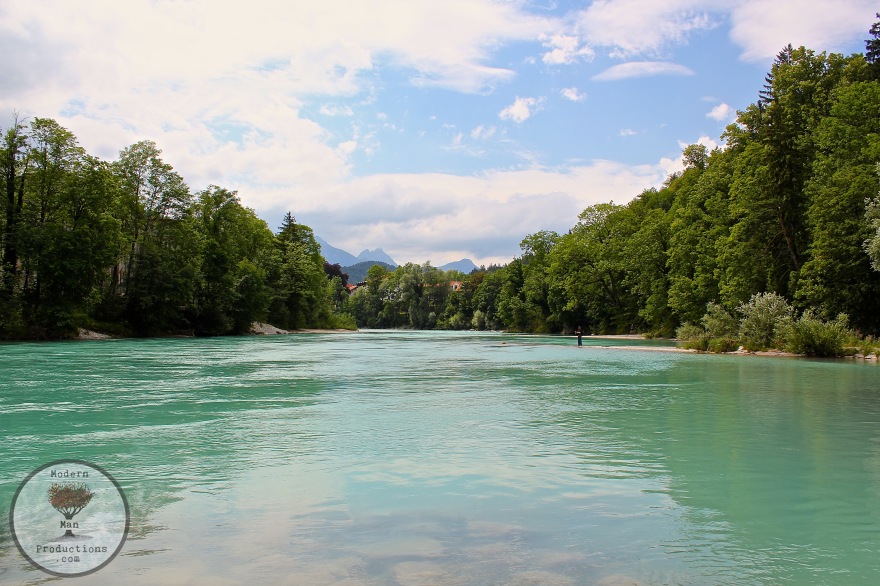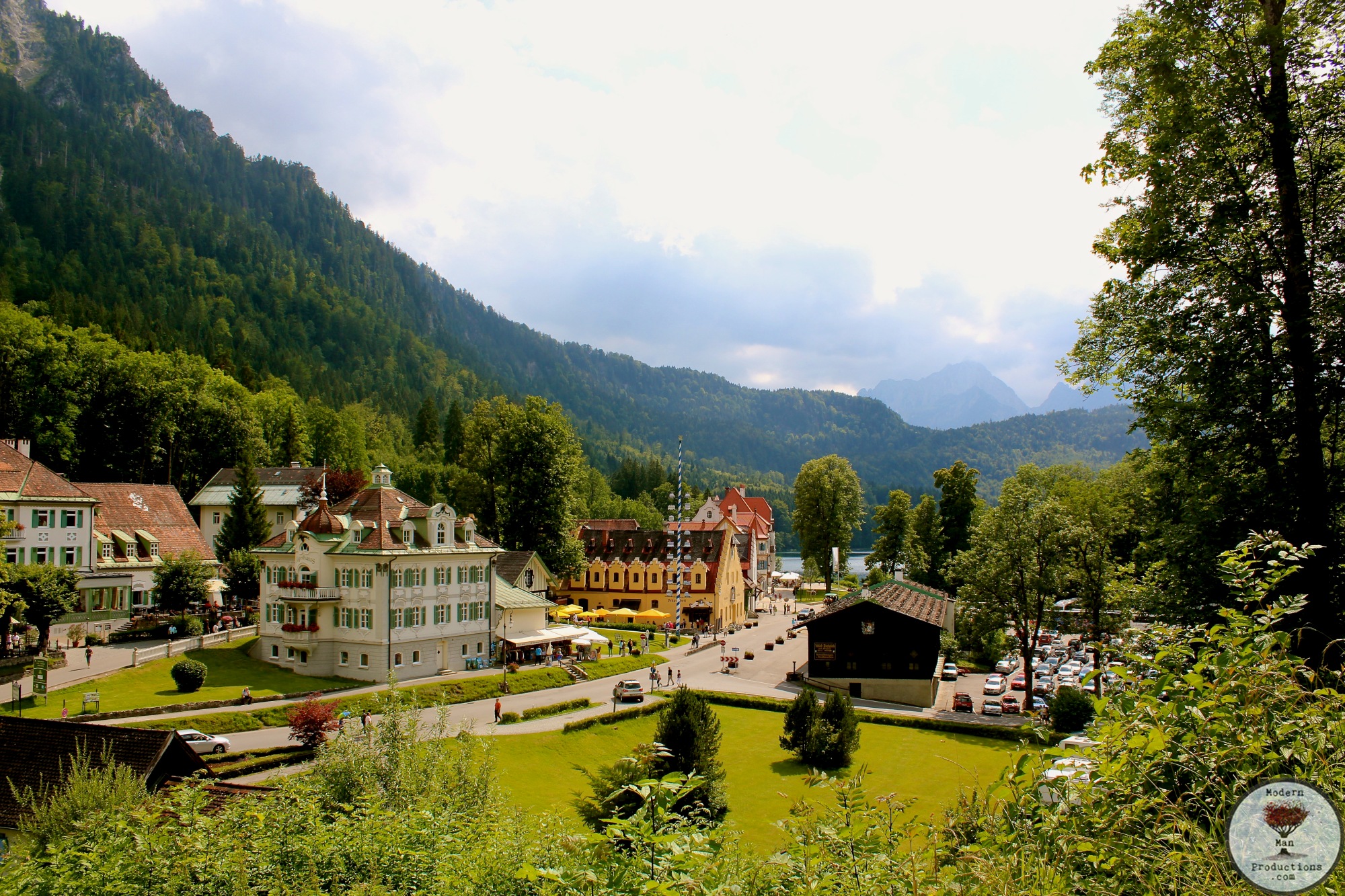Tag: Travel
The Talk of Wall Flowers – Sante Croce Cathedral – Florence, Italy
Back Alley Restaurant – Florence, Italy
Church Blood Drive – Bruges, Belgium
Emerald Lake – Fussen, Germany
A Walk Along Time – the Streets of Assisi, Italy
Of all the places I’ve travelled, it is always in Italy that I feel the most transported from the everyday world; the ancient towns, the art, and the spiritual and political history always inspires my imagination. But out of all the places in this beautiful country, it is the city of Assisi, nestled on a hilltop of the region of Umbria, that made me feel the most transcended from the minor anxieties of everyday life, and to this day, the memory of it ignites my desire to live authentically.

In the photo above you will see one of the well-known and most visited sites of Assisi, the Basilica of San Francesco d’Assisi. This Basilica is easily the most popular attraction, and for good reason. In this basilica you will find countless frescoes painted by Italian masters and, the most awe-inspiring, in my opinion, the robes of Francis of Assisi himself.
Francis of Assisi is considered one the of the most important figures in medieval Christian and European history. Known for his message of universal love and material poverty, Francis was a rallying figure for Christian reform in the late Middle Ages. In a time where independent city states warred with another for property and wealth, and pope and king alike struggled for further political influence, men like Francis of Assisi represented a call to go back to the basic precepts of early Christianity, based on spiritual poverty, charity, and love.
Francis’ message was both popular and controversial. By calling for Christian poverty, not only did St. Francis support humility and spiritual growth, but also provided a forum for criticizing the apparent greed of the church leadership. As there are two sides to every coin, St. Francis laid the path for people to find personal peace and happiness without the need for material ambitions, but on the other hand, paved the way for political revolt and violence under the banner of Christian reform. The latter would be embodied later in the middle ages by new religious groups like the Fraticelli. Those who have read Umberto Eco’s “The Name of the Rose” will be familiar with this name. The Fraticelli were “spiritual Franciscan” monks who criticized the wealth of the Catholic church, and openly supported violent revolt against all current church authority. They were quickly deemed heretical and were systematically hunted down and, in many cases, executed. It is with this history in mind that one walks through Assisi, and feels the powerful potential it holds for personal and social transformation.
When you first enter the walled part of the city, indicating that you are now in through the oldest surviving area, you will notice that, like most other famous cities, it is populated by waves of tourists, densely packed into the area central to the most popular attractions. For Assisi, this area is specifically at the lower part of the Basilica, seen on the bottom left in the photo above, where there is an open and (in theory) spacious court. If you ever find yourself here, make sure that you keep an eye on your pockets, because despite how sacred this place my be, the area is known as a popular spot for pickpockets to work their magic. With that in mind, however, make sure you don’t spend all your time here because, once again, like all famous cities, the real beauty lies off the beaten path.
What’s great about Assisi is that, as an old hilltop city, there are many old pathways and stairwells to explore, most of which are relatively deserted. It is in areas like these that one will authentically experience what Assisi has to offer. Forget about gift shops, restaurants, churches, even the robes of St. Francis himself. The streets of this city hold an unspeakable quality that can be best tapped into by exploring them in solitude or with a friend, with no destination in mind.
As I was walking along with my travel partner, away from the tourists and the regular attractions, the streets seemed eerily empty. However, despite the lack of people, I couldn’t help but feel that this city was alive. The old stone walls seemed to be beating, and even at the sight of a single nun slowly passing by me, I felt that I might as well have been walking past all the inhabitants that this city ever held. In that moment, I did not feel to be a tourist. I didn’t care about pictures, I didn’t care about learning about what each monument stood for or when it was made. What was important was to walk along the street, and let the city itself show me what it had to offer, and what it had to offer was a centuries-old sense of calm; a calm created by the footsteps of a thousand of pilgrims, and the chants of a thousands of monks. This sense of peace is a stronger institution in Assisi than the stones of the basilica itself, and it cannot help but engulf anyone who is willing to accept its embrace.
When walking through Assisi, you are not walking through a museum, you are not walking along a monument commemorating the glories of the past. When you walk through Assisi, you are the exhibit, you are the monument, and with each step you take, you are walking through living memories, which bounce off the old stone walls, and provide the mortar for the cobblestone streets. To walk through Assisi, is to walk back in time, and also outside of it.
Paris in Tilt Shift
It is truly amazing what one can do with tilt-shift photography. Through a simple altering of perspective, one has to the power to turn a colossal metropolis into a toy village.
To show you what I mean, I have created several tilt shift photographs from Paris France, which I took on and around the Eiffel Tower. Enjoy!
Eiffel Tower at Day’s End
Fly Fishing in Fussen

This photo was taken during a day trip to Fussen, Germany. Fussen is a small town in the heart of the Bavarian Alps, and conveniently just a short train ride from Munich. My travel mates and I rented bikes in hopes of a relaxing ride through the town, but our plans were immediately thwarted once we saw that Fussen’s narrow cobblestone streets were teeming with tourists.
After getting tired of navigating our poorly built rental bikes through endless waves of sightseers, we sought refuge by riding down a narrow dirt path into an off-shoot of forestry. The trail seemed to be well maintained, but it was only wide enough for a single rider at a time, and to our right was a sudden 20 foot drop that opened up to even denser forestry. Despite our need to be cautious, our eyes were drawn away from the path that lay ahead of us, to the emerald glow of a glacial river. The vibrant colour of the water seemed to pierce through even the thickest collection of trees. Coming from Toronto, where our lake water is about as opaque as a bucket of tar, we almost couldn’t believe that it was water, but whatever it was, we knew it was where we wanted to be.
We continued to ride down the path for as long as we could. We then lugged our bikes through a couple metres of brush until we reached the sandy shores of the river. We parked our sore behinds at the edge of the river and dipped our feet into its ice-cold water. For the first time that day we were away from the masses. All that was left of humanity was us, and a lone man fly-fishing upstream. It was in this moment I decided to take this photo in order to try to capture the peace and serenity that this river provided us.
While hordes of by-the-book sightseers pushed their way to ticket booths, tourist centres, hourly shuttles and over-priced souvenir shops, my mates and I, with our feet in the water and our heads in the clouds, enjoyed what the Bavarian Alps truly have to offer: raw beauty and, apparently, good fly fishing.
Carousel After Rainfall – Florence, Italy
This photo was taken in Florence in the summer of 2012. Heavy rainfall had just hit and my travel mates and I quickly sought shelter in a covered cafe nearby. After the rain subsided and we finished helping ourselves to free bread and bid buona notte to our disapproving waiter, we exited the cafe and walked to a nearby piazza. It was in this piazza that I saw and captured the beautiful scene in the photo above. The remains of the evening rainfall scattered the light of this empty carousel and bathed the entire Piazza in gentle golden light.
I frequently look back on this photograph because it reminds me that in order to experience the extent of this world’s beauty, one must be ready to embrace a storm.












